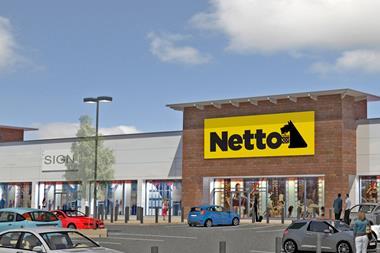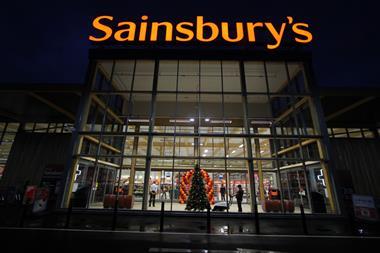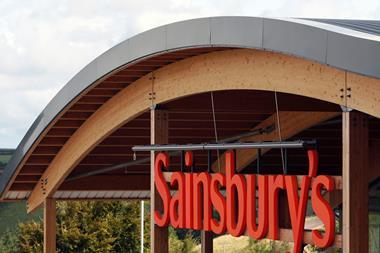Sainsbury’s released its eagerly-awaited strategic update this morning. The update includes a four-month detailed review of its entire estate and looks at all areas of the Sainsbury’s business, from its superstores to its online operation.
Sainsbury’s hasn’t reinvented the wheel with this review – the statement released this morning by the retailer features the words ‘continue’ and ‘maintain’ frequently – but it lays bare Sainsbury’s plans for the next five years, and how it thinks the grocery market will perform.
The review, CEO Mike Coupe said, would “build on our strong values, differentiated offer of quality products and services, competitive value proposition, advantaged store portfolio, established convenience and online businesses, great colleague service and our unique understanding of our customers”. And for Sainsbury’s the three ‘p’s’ – property, price and product – are the buzzwords.
Property
As predicted, Sainsbury’s confirmed it would cut back on store openings, opening 500,000 sq ft of space over the next two years, versus a previously stated 750,000 sq ft, followed by 350,000 sq ft in 2017/18. That includes eight new supermarkets and four replacement stores.
The detailed review of its estate found 25% of its stores would have “under-utilised space” within the next five years. Sainsbury’s plans to put this space to better use by introducing more non-food and general merchandise, more concessions, such as Sainsbury’s Mobile stores, Timpson’s, Jessops – and even “possibly” Netto.
Coupe told journalists this under-utilised space was typically about 10,000 sq ft in size – and much smaller than rivals’. It even has excess space in its Holborn HQ and has sub-let two floors of the building.
Though it is slowing store openings, Sainsbury’s is maintaining its rate of c-store openings at about 100 a year. It also plans to open smaller c-stores – as small as 750 sq ft – in urban areas focusing on food to go and, at the other end of the scale, larger c-stores of up to 7,000 sq ft. Coupe pointed to a store of this size in Earlsfield, south west London, which he said was “very successful.”
C-stores remain an important part of Sainsbury’s offer because it “expects to see further growth in the number of visits to stores from customers who are buying ‘food for today,’ ‘tonight’ or ‘just a couple of days’.”
However, Coupe insisted the death of the superstore had been “grossly exaggerated.” He pointed out its top-performing stores were still superstores, and its research suggested two thirds of supermarket shopping was for smaller shopping missions.
Price
In September, Sainsbury’s overhauled its pricing – moving to a mid-low pricing strategy after reducing the price of about 12,000 products over the past 18 months. It also ditched Tesco from its Brand Match scheme.
Today, it revealed it was investing a further £150m in price cuts after identifying “the product areas where it is more difficult to differentiate and where customers’ needs are more price-led – those that are heavily branded and more commoditised product ranges.”
Coupe said the investment would begin “almost immediately,” with approximately half of the £150m investment being made in the second half of 2014/15 and the remainder in the first half of 2015/16.
And he added it would be “paid for in future years through efficiencies in the value chain. We will deliver these efficiencies working in close partnership with our suppliers.”
Coupe also predicted discounters could in the future command a market share of about 12% to 15%, based on the grocery markets of other European countries.
Product
Addressing the threat of the discounters through price at one end of the market, Sainsbury’s is addressing competition from Waitrose and Marks & Spencer at the other end by further improving the quality of its own-label products.
Over the next 18 months, Sainsbury’s planned to improve 3,000 own-label lines, “investing in range, innovation, packaging and merchandising, and deliver great taste and ethical sourcing in line with our values,” Coupe said.
Just like its £150m price investment, the products that will be improved will be “focused on the categories which matter to our customers” – products that shoppers buy for special events and generally eat soon after purchase. And Sainsbury’s will also be working closely with suppliers to make the improvements.
Coupe claimed the strategic review would put Sainsbury’s in a position where it would be able to face anything the grocery market throws at it in the future. Its success will be judged on whether Sainsbury’s once again outperforms the market and gains market share. You can bet its analysts, suppliers, rivals, shareholders and, above all, customers will be keeping a close eye on its progress.


















No comments yet